Prophetstown State Park
Introduction
Text-to-speech Audio
Situated next to the Wabash River, Prophetstown State Park is where a village established by Shawnee brothers Chief Tecumseh and his brother, Tenskwatawa, was once located. The park is named after Tenskwatawa, who was a spiritual leader and known as "The Prophet." They established the town in 1808 for Native Americans to live united and away from European influence. The park features camping sites, hiking and bike trails, and a 1920s era farm.
Images
Tenskwatawa, Shawnee prophet and co-founder of Prophetstown.
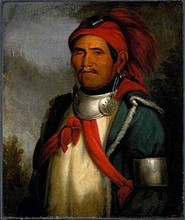
Historic marker of Prophetstown.
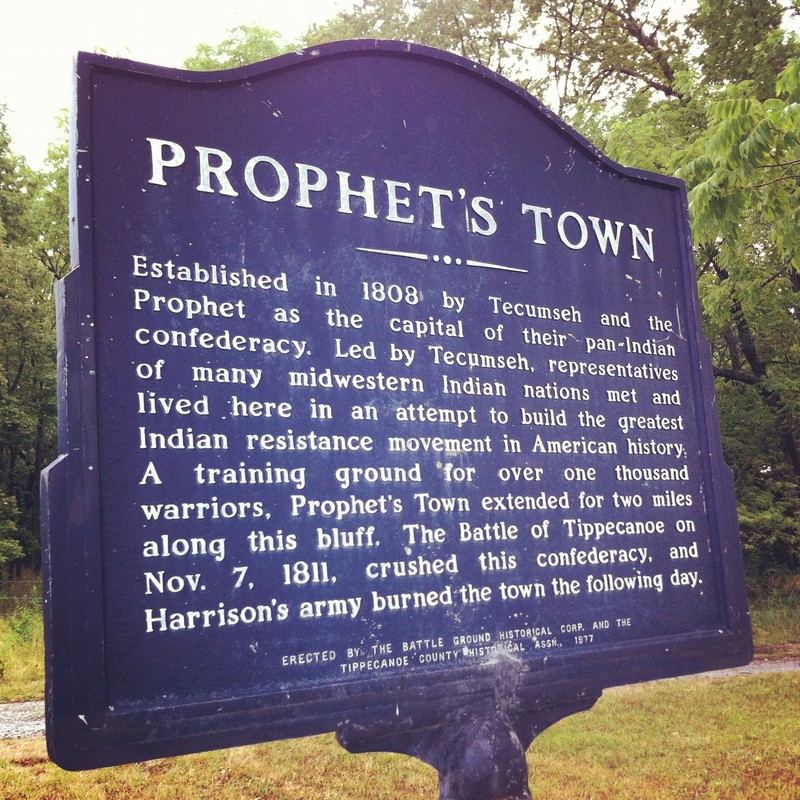
An Ohio State historical marker depicting the birthplace of Tecumseh. There are no known images of Tecumseh.
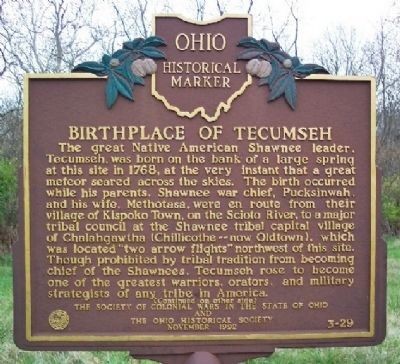
The site of the Battle of Tippecanoe as it appeared in 1860, see http://freepages.history.rootsweb.ancestry.com/~wcarr1/Lossing2/Chap10.html, accessed May 7, 2017
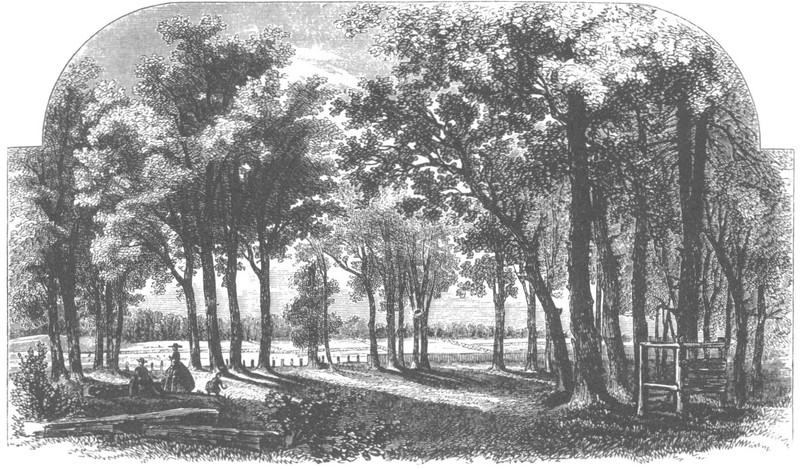
Prophet's Rock, Tippecanoe Battlefield Museum and Park Where the Shawnee Prophet observed and sang to bring strength to warriors fighting during Battle of Tippecanoe.
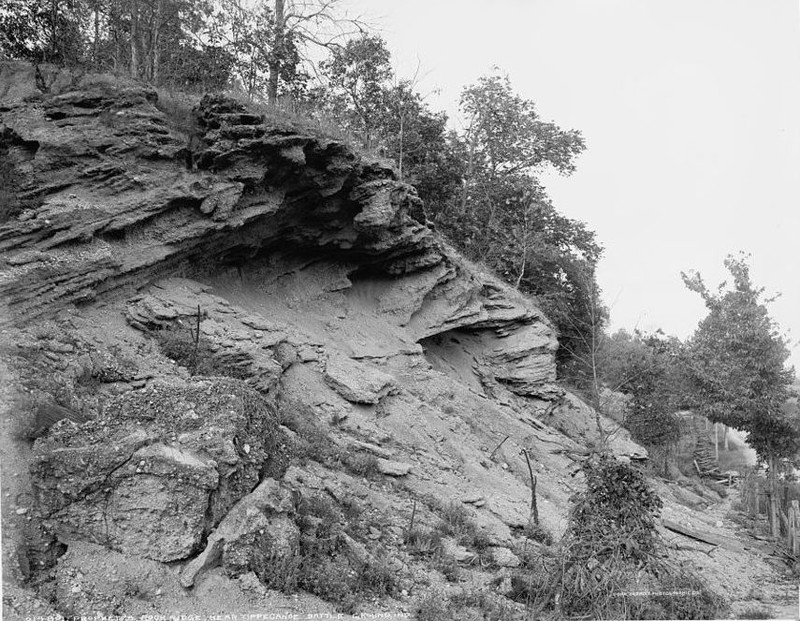
Backstory and Context
Text-to-speech Audio
Background
Tecumseh and his brother, Tenskwatawa, wanted to establish a village where Native Americans, in a confederation of tribes, could live united against American settlers, who were constantly encroaching on Native land. The brothers felt that their culture was being corrupted and wanted to save it. The village was located at the merging of the Wabash and Tippecanoe Rivers. It was the perfect place to have their new community. The village was going to stand as a community center for all Native Americans and also stand against and defend their culture and land from the Europeans. The Village, unfortunately, did not last long.
The Battle of Tippecanoe
In 1811, while Tecumseh had traveled south, William Henry Harrison took the opportunity of his absence to march in and defeat the people gathered at Prophetstown. He marched towards the village with over 1000 men with the intentions for battle. Tenskwatawa felt that there would not be any negotiations that could be made and decided to send his own army in to attack. After about two hours of fighting, the Native Americans retreated. The next day, Harrison marched into the village and found that it had been abandoned. He decided to burn what was left to the ground. After the battle, Tecumseh joined forces with the British in hope of defeating the Americans. He, unfortunately, died at the Battle of the Thames and never got to see the end of the war. After this, the Native Americans faced much more defeat. They saw their land being taken more every day and were forced to move to smaller territories elsewhere.
Prophetstown State Park
The state park was established in 2004 and is Indiana's newest state park. The park offers many activities including camping, picnicking, fishing, hiking, and much more. There is also a 1920s era farm that teaches visitors about historic agriculture. The park has also been working to reestablish native habitats. Nearby, the Battle of Tippecanoe Museum offers information about the battle. Also nearby are various parks and the Columbia Park Zoo.
Tecumseh and his brother, Tenskwatawa, wanted to establish a village where Native Americans, in a confederation of tribes, could live united against American settlers, who were constantly encroaching on Native land. The brothers felt that their culture was being corrupted and wanted to save it. The village was located at the merging of the Wabash and Tippecanoe Rivers. It was the perfect place to have their new community. The village was going to stand as a community center for all Native Americans and also stand against and defend their culture and land from the Europeans. The Village, unfortunately, did not last long.
The Battle of Tippecanoe
In 1811, while Tecumseh had traveled south, William Henry Harrison took the opportunity of his absence to march in and defeat the people gathered at Prophetstown. He marched towards the village with over 1000 men with the intentions for battle. Tenskwatawa felt that there would not be any negotiations that could be made and decided to send his own army in to attack. After about two hours of fighting, the Native Americans retreated. The next day, Harrison marched into the village and found that it had been abandoned. He decided to burn what was left to the ground. After the battle, Tecumseh joined forces with the British in hope of defeating the Americans. He, unfortunately, died at the Battle of the Thames and never got to see the end of the war. After this, the Native Americans faced much more defeat. They saw their land being taken more every day and were forced to move to smaller territories elsewhere.
Prophetstown State Park
The state park was established in 2004 and is Indiana's newest state park. The park offers many activities including camping, picnicking, fishing, hiking, and much more. There is also a 1920s era farm that teaches visitors about historic agriculture. The park has also been working to reestablish native habitats. Nearby, the Battle of Tippecanoe Museum offers information about the battle. Also nearby are various parks and the Columbia Park Zoo.
Sources
Homepage. The Farm at Prophetstown. Accessed May 4, 2017. http://prophetstown.org/#sthash.4ou2h05n.dpbs.
“Prophetstown,” Discover Indiana, accessed May 4, 2017, https://indyhist.iupui.edu/items/show/135.
"Prophetstown State Park." Accessed May 4, 2017. http://www.in.gov/dnr/parklake/2971.htm.
“Prophetstown,” Discover Indiana, accessed May 4, 2017, https://indyhist.iupui.edu/items/show/135.
"Prophetstown State Park." Accessed May 4, 2017. http://www.in.gov/dnr/parklake/2971.htm.
